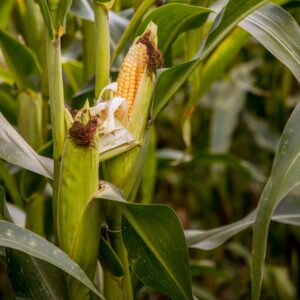
“Weather remains a primary driver of agribusiness confidence and growth in agriculture”, Wandile Sihlobo (Agbiz)
South Africa is a relatively dry country. The climate varies from desert to semi-desert in the west, to relatively wet in the eastern parts adjacent to the Indian Ocean. Compared to the rest of the world, this country has a very low average rainfall – 470mm per year, which is only half of the world average.
South Africa’s rainfall is typically unreliable and unpredictable. South Africa is periodically afflicted by drastic and prolonged droughts, which often end in severe floods. There are several explanations for the variable rainfall. One reason is related to the oceans around the country. Another is linked to our position in the global weather and climate systems. For example, we receive some rainfall from warm, moist air that sweeps down over the country from the North- West. In the South Western parts of the country, cold fronts usually bring winter rainfall. La Niña and El Niño also influence our rainfall from time to time.
Because of the topography as well as the rainfall distribution, 60% of South Africa’s run-off water is in rivers that flow through only 20% of the country (the eastern region). Most of our clouds are caught up by the Drakensberg mountain range in the east where precipitation occurs. This water then runs down the steep side of the Drakensberg and into rivers of KwaZulu-Natal and into the sea.
On average, only some 9% of rainfall reaches the rivers.
The country falls squarely within the subtropical belt of high pressure, making it dry, with an abundance of sunshine.
Many day-to-day decisions of farmers depend on current weather conditions and how it will change over the next few days, weeks or months.
The climate of a place will determine what crops will succeed best in a specific region, or what animals will best suit a specific region.
Agrometeorology studies the influence of climate and weather on agricultural production. As South Africa’s seasonal climate is highly variable and precarious, climate is a deciding factor in successful agricultural production.
At the moment, there are two fundamental aspects that seem to underpin the weather factor in South Africa’s agricultural sector.
These weather shifts have been a continuous challenge for farmers in terms of planning the planting periods so they can coincide with peak rainfall patterns in order for crops to receive sufficient moisture for seed germination and crop development.
Extracted from “Changing weather patterns a challenge for farmers” by Wandile Sihlobo, chief economist at Agbiz. Find the whole article at https://wandilesihlobo.com/2019/02/21/changing-weather-patterns-a-challenge-for-farmers/.
Source: Dr Herman Fouchè and Mr Johan van den Berg in an article originally printed in Landbouweekblad. Find other articles under the "Websites & publications" heading.
Inclement weather has a negative effect on the objectives of government’s National Development Plan to create a million jobs in agriculture by 2030.
Read about Rain for Africa (R4A), a project between several partners including the Dutch government, the ARC and the SA Weather Service to provide the best possible weather information so as to reduce input costs by 10% and increase income by 10%. Find information at www.rain4africa.org/wp-content/uploads/2016/10/A4-leaflet-R4A-HR-fin1.pdf.
Refer to the websites listed earlier on this page. The website of the South African Weather Service, for example, can be accessed at www.weathersa.co.za.
Useful numbers
Climate Information and data Tel: 082 233 8484
Pretoria Central Forecasting Office Tel: 082 233 9800